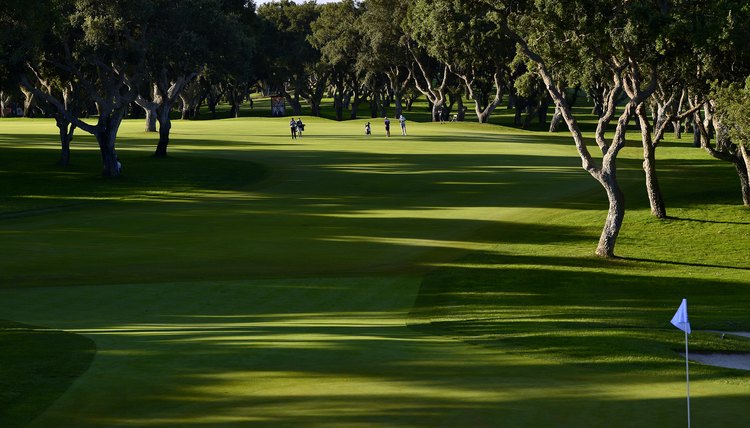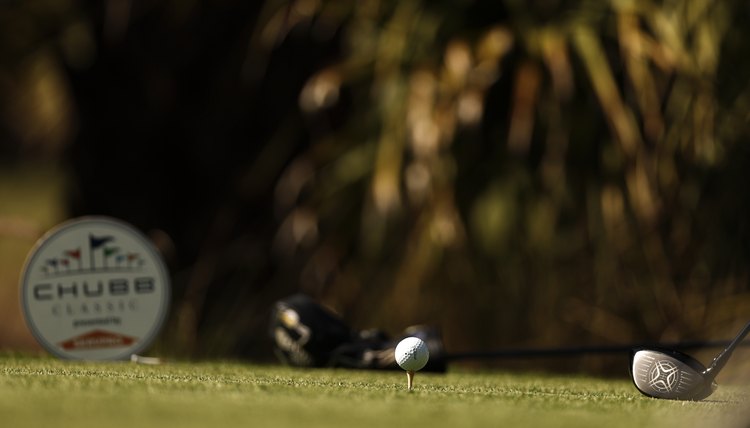What Is the Difference Between a Draw and a Fade in Golf?

Draw vs Fade: the Difference
Draws and fades are two effective types of golf shots that feature controlled movements of the golf ball on the golf course.
The difference in these two types of shots is simple: A draw golf shot’s ball flight path curves from the player’s right to his left (for a right-handed golfer) while a fade golf shot moves in the opposite direction, from left to right.
Some amateur golfers hit draw shots or fade shots naturally, while PGA Tour professional golfers can typically hit draws or fades at will to gain the proper position on the fairway, dodge bunkers, or to land the ball at a desired spot on the green. Learning how to hit these shots can be critical for your golf game.
How to Hit a Draw
Golf swing instructor Josh Zander says golfers who wish to hit a draw should visualize what a handball player does to curve the ball to the left: The handball player hitting such a shot strikes the ball with the palm of his hand square to the target, but rotates his hand down and to the left through the hitting zone.
Zander advises golfers to use the same motion with the right hand when trying to hit a draw- this should create the backspin necessary to alter the shot shape in your favor.
To gain sufficient height for a better launch angle and higher trajectory on a draw off the tee, golf teacher Mike Lopuszynski says to line the ball up with your left armpit, then close your stance “about an inch,” which should create the ball’s right-to-left path.
Take the golf club head back low and straight, then maintain a long sweeping arc for the remainder of your swing path, including the follow through.
How to Hit a Fade
LPGA standout Lorena Ochoa hits a fade by first pointing her body to the left of the target. She aims the club face at the spot where she wants the ball to land, then proceeds with her normal swing. From the tee, PGA pro Steve Bosdosh says, place the ball on the right side of the tee box, then aim at a spot on the left half of the fairway.
Tee the ball an inch or two farther forward than normal, with the ball’s center aligned with your club’s sweet spot at address.
Open your club face “a few degrees,” Bosdosh says, then take your normal swing. Golf instructor Mitchell Spearman adds that a faded tee shot “still carries far but has less roll, so it is more likely to stay in the fairway.”

Hitting a Fade or Draw Off the Tee
In general, use a fade off the tee on a dogleg hole in which the fairway bends to the right, and a draw if the fairway is dogleg left.
Bosdosh recommends fading the ball off the tee if your natural straight shot drive curves too far to the left, or on fairways that bend to the right and contain hazards on the left. He says the fade is easier to pull off than "a dead-straight drive or one that draws.”
Approach Shots
Golf writer Steve Newell recommends hitting a draw on an approach shot when the flag is on the left side of the green.
This allows you to aim for the middle of the green, which is where the ball should land if you fail to curve it properly. If you draw it as planned, you have a good chance of following your target line and landing it close to the hole.
The reverse logic applies on greens in which the flag is closer to the right edge, in which case a fade shot is the safer play. Remember that the more loft your club head has, the more difficult it will be to apply the side-spin necessary to draw or fade the ball.
Writer Bio
M.L. Rose has worked as a print and online journalist for more than 20 years. He has contributed to a variety of national and local publications, specializing in sports writing. Rose holds a B.A. in communications.
